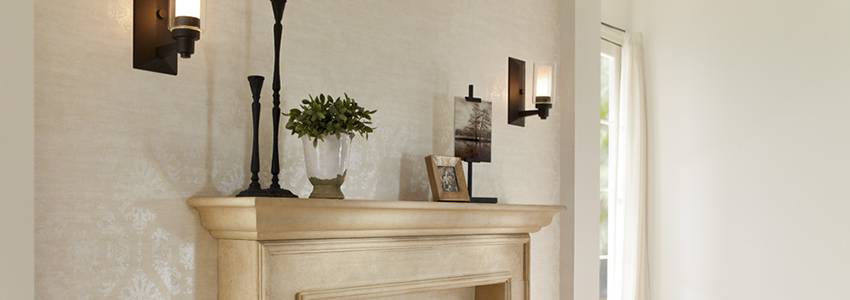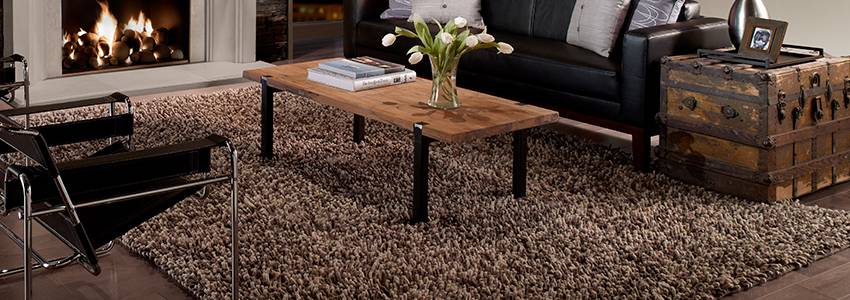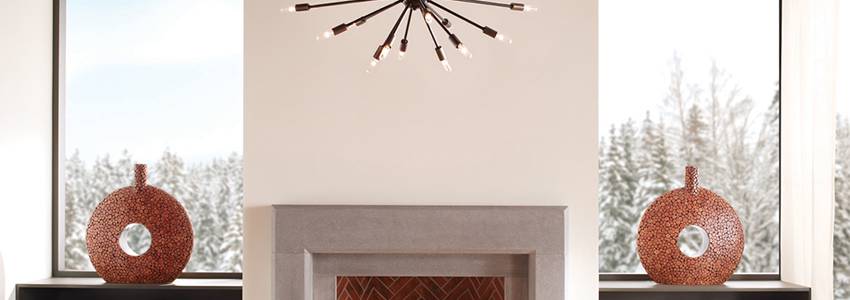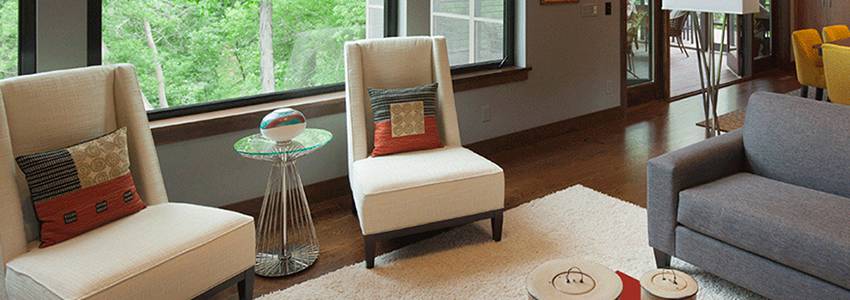Some people fit clearly into one box when it comes to style. You probably have that friend who loves modern everything, while another can’t get enough of antique or classic pieces. Are you somewhere in the middle? If so, transitional style just might be exactly what you’ve been looking for.
The concept of transitional style is blending modern and traditional styles to create a classic, elegant look. The hallmarks of transitional style include a neutral color palette, organic textures, minimal artwork and accessories, and comfortable furniture.
Wondering how it all fits together? You could pair an antique dresser with a modern mirror, or choose traditional barstools to place at an island with modern finishes. Transitional style exudes serenity, harmony, and calmness.
Want to find out more about transitional style? Learn how to incorporate transitional style design into your home by reading the four key elements of transitional style. Then, go for it!
1. Muted color palette

To achieve the transitional look, go for a clean, muted color palette. Think beige, tan, off white, ivory, cream, khaki, vanilla, and taupe. You don’t have to go monotone. Instead, pick a variety of shades for your furniture, rugs, walls, and curtains. Just be sure all the colors work well together. Stand back and squint. If any one piece jumps out at you more than the others, it might not work with the other colors in the room.
Typically, if there is a darker color making an appearance in a transitional room, it comes in the form of warm brown or chocolate brown wood tones. For example, a chair might be upholstered in a creamy beige, but have chocolate brown legs and arms.
When choosing flooring in the transitional style, go for choices that will play well in the background. Stone, tile, natural woods, and rugs and carpeting should be kept to a restrained color palette.
2. Organic textures

Transitional style favors the use of organic textures, such as wood, hides, stone, concrete, corduroy, and granite. In the kitchen, consider a concrete or granite countertop over beautiful wooden cabinets.
Because transitional style uses a muted color palette, texture plays a role in providing visual interest. Accessorize with nubby chenille blankets, corduroy cushions, dimpled fabrics, or textured rugs. Bring nature indoors with stone vases, wooden trays, and a well-placed plant.
Don’t overdo it when it comes to patterns. If you’re picking out curtains or a rug, stick to an understated pattern. No punches, pops, or bold prints. If you just have to have a pop of color somewhere in the room, keep it to one or two accents, such as in a throw blanket, piece of artwork, or a lamp.
3. Minimal artwork and accessories

Think less is more when it comes to transitional style. You want to take a minimalist approach to selecting accessories and objects. Choose a few tasteful, carefully selected pieces to display without attracting a lot of attention.
Don’t clutter up a room—or de-clutter it if needed. If you have items that must live in a certain room (children’s books or games, throw blankets, kitchen utensils), tuck them away. Baskets are a great way to add texture to a room while hiding away your necessities.
If you’re displaying photos or artwork, do so in an understated way. Use basic white matting and simple, clean-lined frames. If you’re choosing photos to display, consider black and white, which goes great with the transitional style.
If you’re going for a transitional look, you don’t necessarily have to run out to the store to find new modern accents or pretty antiques. Instead, work with what you already have. That pretty old lamp from grandma? Move it front and center onto your modern end table.
Take a look at other objects in your house, or even your attic, and turn a critical eye to whether they fit with the look you’re going for. Remember, choose wisely and sparingly, and don’t over-clutter.
4. Bold, comfortable furniture

One of the most important aspects of selecting furniture in the transitional style is choosing pieces that are comfortable and inviting. Pick strong furniture that carries the space, while feeling inviting and warm.
When looking at the lines of furniture, transitional style combines curves and straight lines. Go for a look that balances both masculine and feminine attributes, for a contemporary look that is also comfortable. You don’t want a room to look too frilly, or too manly.
If you’re on the hunt for new furniture, look for pieces that are Shaker, Asian, or Mission-style. These styles pair well with transitional design because of their simple, classic look.
Buying a new piece? Make sure you sit in it for more than a hot second before buying. After all, you don’t want to get it home only to discover it’s not as comfy as you thought. You want your kids, parents, guests, and friends to feel right at home settling in on your furniture.
Related Categories
Design TrendsSarah Lograsso
As Director of Marketing and Portfolio Management, Sarah has successfully coupled her design talents with business acumen to refresh, refine and distinctly position five standout brands in the North American market and abroad. She continues to provide design direction for the brands’ variety of best-selling modern profiles and trend-forward color palettes while enhancing the prestige of the category among masons, builders, designers, architects and consumers.



Let Us Know What You Thought about this Post.
Put your Comment Below.